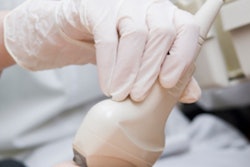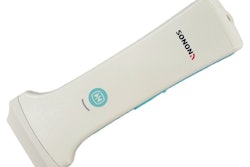Tuesday, November 29 | 3:40 p.m.-3:50 p.m. | SSJ01-05 | Arie Crown Theater
In this Tuesday session, researchers from Memorial Sloan Kettering Cancer Center will present study data that show contrast-enhanced digital mammography to be more sensitive than whole-breast screening ultrasound (WBUS) for supplemental breast cancer screening.A team led by Dr. Janice Sung compared the two modalities by recruiting 126 asymptomatic women scheduled for a screening mammogram and WBUS within 30 days of each other; contrast mammography was performed in place of the screening mammogram. The study was conducted between December 2014 and March 2016.
The women had contrast-enhanced digital mammography (CEDM) and WBUS during the same visit. The results were read by two radiologists blinded to the other modality. The readers read the contrast-enhanced images after reading low-dose digital mammography images. If indeterminate findings appeared on CEDM but not on low-dose 2D or WBUS, the patient underwent an MRI for further evaluation.
The mean patient age was 54, and 84% of the women had dense breast tissue. Forty percent had a previous history of breast cancer, and 33% had a family history of the disease in a first-degree relative. The researchers found five cancers in four women, for an overall cancer detection rate of 40 cancers per 1,000 women.
Contrast mammography identified all five cancers, while one cancer (a ductal carcinoma in situ) was found on regular mammography and two were identified on WBUS (one invasive ductal carcinoma and one ductal carcinoma in situ). Nine patients underwent an MRI for further evaluation of findings seen only on contrast mammography; four of these were negative, Sung and colleagues found. The positive predictive values after biopsy were higher with WBUS, however, at 50% versus 42% with CEDM.
The cancer detection rate of CEDM is higher than those of regular mammography and WBUS, but contrast mammography may prompt additional imaging in the form of MRI for a small subset of patients, according to Sung and colleagues.




















